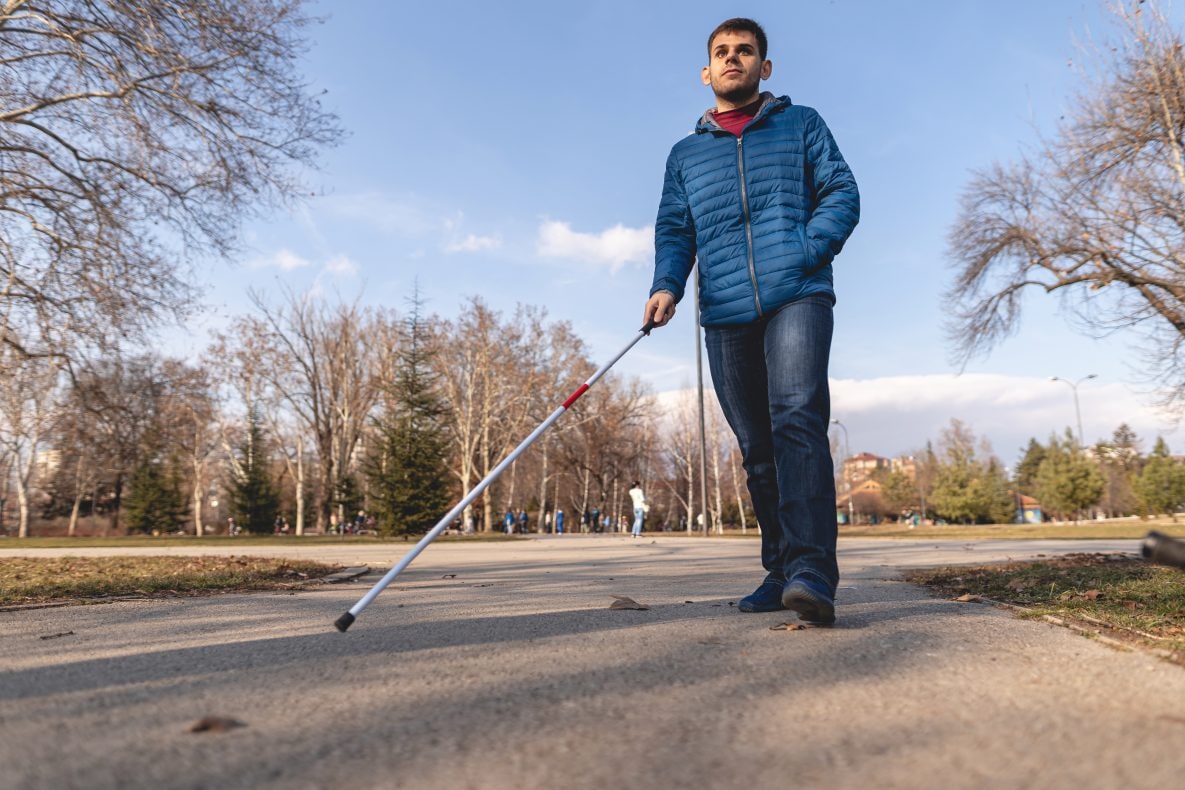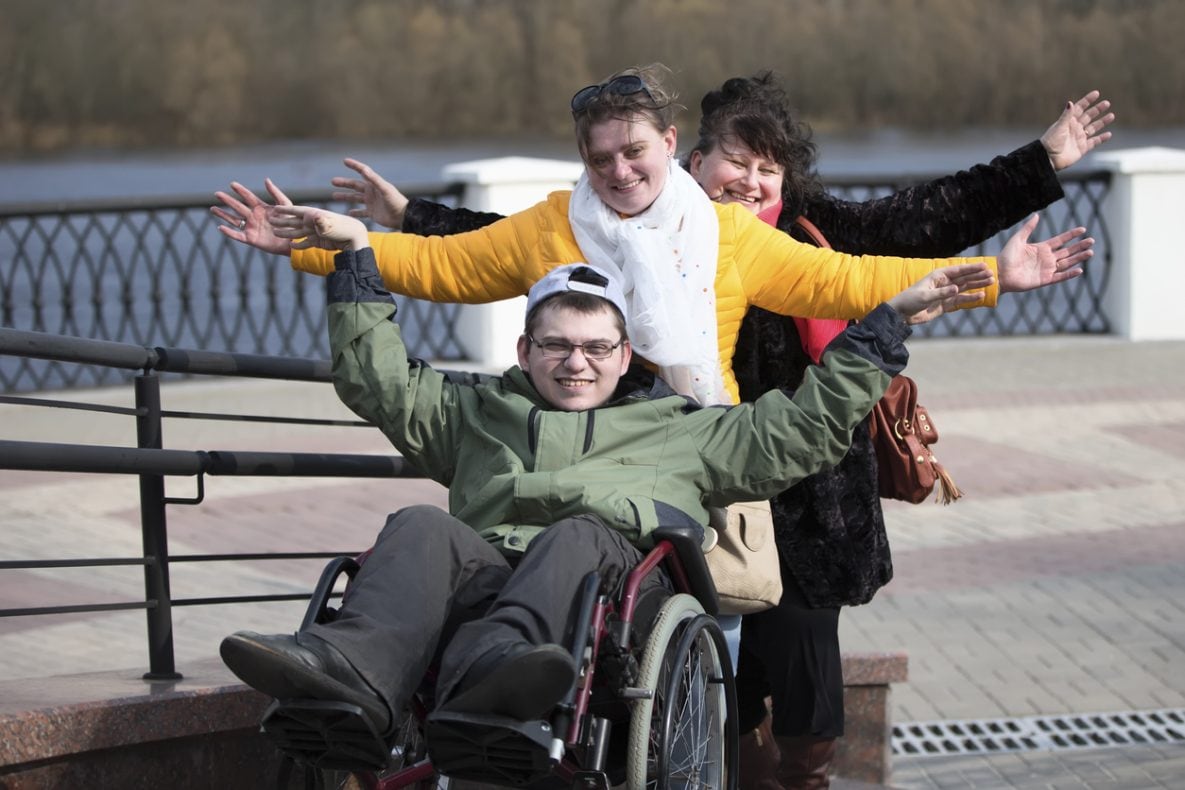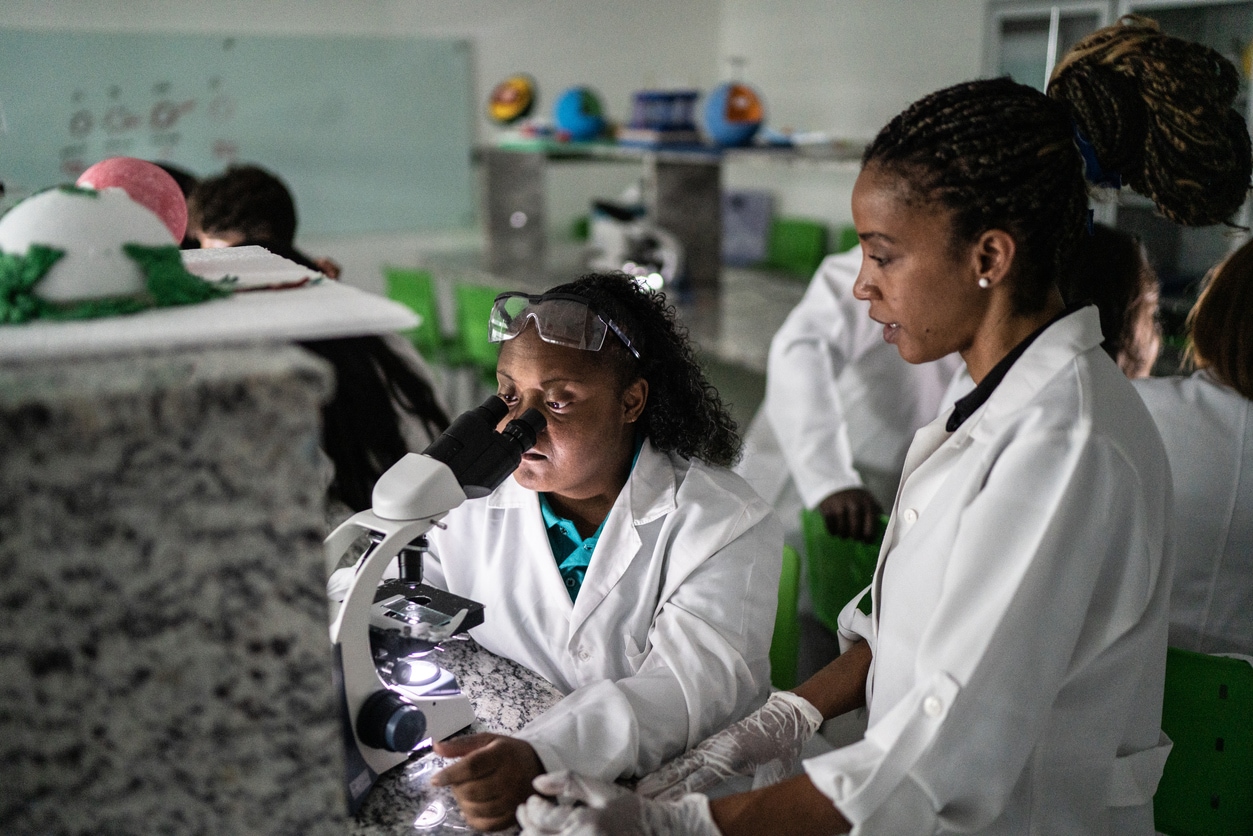Disability Inclusion as a Cornerstone for Health Equity
July 14, 2023
Do you know someone with a disability? That someone could be you, your child, your parent, a neighbor, or a colleague at work. One in four adults in the United States reports having some form of a disability. People with disabilities comprise a large and diverse group, which crosses age, gender, race, ethnicity, sexual orientation, and socioeconomic status. Although having a disability is quite common, understanding how best to support and engage people with disabilities is not as widespread.
What is Disability?

A man with visual impairment uses a white cane to walk in the park.
A disability can be defined as a physical or mental impairment that greatly limits one or more major life activities including eating, breathing, walking, working, or taking care of one’s self. A disability may be genetic, acquired due to an injury or illness, occur at any time across the lifespan, be permanent or temporary, or experienced as part of the aging process. Some disabilities are ‘visible’ or able to be more easily detected because there are physical characteristics that denote a potential impairment, such as the use of a wheelchair, white cane, service animal, or cochlear implant. However, many disabilities, including those associated with mental health, autoimmune and neurological conditions, or chronic pain, can be ‘invisible’ or less apparent to those around the person with the disability. Thus, it’s important to enhance awareness and understanding about living with a disability in order to not perpetuate stigma, reinforce false stereotypes for those that do have disabilities, and promote ableist beliefs that having a disability is some type of shortcoming. For many, the disability itself is not the main challenge; instead, it’s the environments that they live, learn, work, and play that create the biggest difficulties. In sum, it’s the attitudes of others and their surroundings that are not inclusive and create limits for their personal independence, health outcomes, and overall success.
What is Disability Inclusion?
Disability inclusion ensures that people with disabilities have the same opportunities as everyone else to go to school or work, attend faith-based institutions, access quality healthcare services, and public health programs, and actively engage within their communities. This necessitates having inclusive programs, sufficient policies and systems, and accessible environments in place to advance these opportunities for people with disabilities to achieve full integration in every aspect of society. Common barriers faced by people with disabilities include

A young man using a wheelchair plays outdoors with his family.
- Attitudinal barriers, or how society observes and perceives people with disabilities (e.g., stereotypes, stigma, prejudice, and discrimination).
- Communication barriers, or how people with disabilities provide, understand, and receive information (e.g., lack of videos with captions, easy-to-read materials, large print and Braille versions, and low color contrast within visual formats).
- Physical barriers, or how well people with disabilities can navigate and move within different environments (e.g., steps without ramps, elevators, or lifts; absence of automatic doors; high, static shelving; and narrow doorways and aisles).
- Programmatic barriers, or how effective the intent and delivery of healthcare services or health promotion programs are for people with different types of disabilities (e.g., inconvenient scheduling; lack of accessible medical equipment like weight scales, examining tables, and mammography screening equipment).
- Transportation barriers, or how adequate transportation and related physical infrastructure connects and supports people with disabilities to travel within their communities (e.g., limited or inconvenient locations for public transit, lack of curb cuts, limited connectivity of sidewalks, and inaccessible signage and wayfinding).
Public health strategies should be designed and implemented to identify and remove barriers that hinder, or even deter, people with disabilities from being supported and actively involved within their communities, or achieving optimal health. Disability inclusion is foundational to this approach. It bridges individual function with needed policy, systems, and environmental improvements to transform communities and environments where everyday activities may not be negatively impacted. Thus, public health and healthcare professionals can play a critical role in assessing and addressing barriers, developing culturally appropriate interventions and accessible environments for people with different functional disability types, and working towards achieving health equity for people with disabilities.
CDC’s Commitment to Disability Inclusion
In collaboration with our partners, CDC strives to amplify the enduring legacy of the Americans with Disabilities Act (ADA) and accomplish national goals with initiatives intended to ensure that people with disabilities have seamless access to healthcare services and public health programs that support health-enhancing behaviors. Our aim has been putting health equity into action by creating inclusive communities where everyone has equitable opportunities for a healthy and meaningful life. CDC’s Office of Health Equity enhances health equity science to identify and implement strategies to address social and structural factors that have caused health disparities for people with disabilities, expand and strengthen partnerships committed to addressing health inequities among people with disabilities, and advance disability inclusion as part of a comprehensive health equity framework.
Recognition of ADA Anniversary and Disability Pride Month

A student with a disability working with her teacher in a lab.
On July 26, 2023, we recognize the enactment of the ADA. It’s been 33 years since the ADA was signed into law and summoned a national commitment to addressing long-standing discrimination against people with disabilities and moving towards achieving health equity. The ADA provides needed protections for people with disabilities in different aspects of society, such as employment, education, health care, telecommunications, and transportation. This federal policy reduced barriers impeding people with disabilities from full integration into American life.
The annual ADA anniversary observation has expanded now to be a month-long recognition of Disability Pride Month. It’s become a purposeful opportunity to honor the countless contributions of people with disabilities and acknowledge their varied experiences while promoting their collective visibility within each state and every community. CDC’s Office of Health Equity is also celebrating this year, with the 35th anniversary of “baking” health equity into public health work. As we commemorate ADA, Disability Pride Month, and the Office of Health Equity, let’s renew our commitment to making disability inclusion and health equity foundational ingredients in our public health work.
Each of us can find ways to acknowledge Disability Pride Month and extend the reach of the ADA by addressing barriers for people with disabilities in our own communities. Become a disability ally. Together, we can build disability inclusion as a cornerstone to achieving health equity for all!